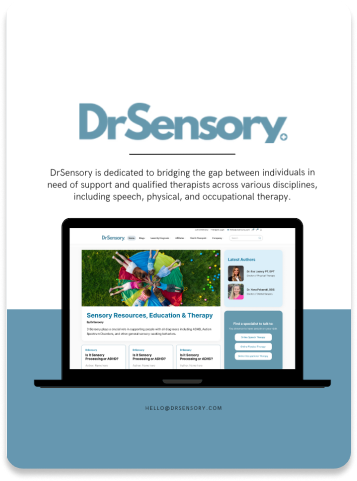
Blog
How to Build a Physical Therapy Website That Ranks and Converts
Expert web designers ensure the site and software is easy to use.How to Build a Physical Therapy Website That Ranks and Converts
Your physical therapy website isn’t just a digital business card—it’s your most powerful marketing tool. A well-designed website attracts new patients, builds trust with existing ones, and generates revenue around the clock. Yet many PT practices struggle with websites that look outdated, load slowly, and fail to appear in search results when patients need them most.
This comprehensive guide will show you how to create a physical therapy website that excels at both search engine optimization and patient conversion. You’ll learn the essential elements of PT website design, discover how to structure your site for maximum SEO impact, and understand the user experience principles that turn visitors into patients.
Whether you’re building a new website or improving an existing one, these strategies will help you create an online presence that attracts more patients and grows your practice consistently.
Physical Therapy Marketing & SEO: A Guide to Managing Customer Data for Growth

Why Physical Therapy Website SEO Matters More Than Ever
Physical therapy patients increasingly start their search for care online. Research shows that 77% of patients use search engines before booking medical appointments, and 84% trust online reviews as much as personal recommendations. Without strong website SEO, potential patients will never find your practice when they need it most.
SEO for PT websites differs from general business websites because healthcare searches often indicate urgent needs. When someone searches “physical therapy near me for back pain,” they’re not casually browsing—they’re seeking immediate relief. Your website needs to capture these high-intent searches and quickly convert visitors into patients.
Modern search engines also prioritize websites that provide excellent user experiences. Google’s Core Web Vitals and other ranking factors reward sites that load quickly, display properly on mobile devices, and help users find information efficiently. This alignment between SEO and user experience means that optimizing for search engines also improves patient satisfaction.
Local SEO for Physical Therapists: How to Dominate in Your Area
Essential Site Structure for PT Websites
Your website’s structure forms the foundation for both SEO success and user experience. A logical, well-organized site helps search engines understand your content while making it easy for patients to find the information they need.
Homepage Design and Organization
Your homepage serves as the digital front door to your practice. It should immediately communicate who you are, what services you provide, and why patients should choose you over competitors.
Start with a clear value proposition above the fold. Instead of generic statements like “providing quality physical therapy,” use specific language that addresses patient needs: “Get back to the activities you love with our specialized sports injury rehabilitation programs.”
Include essential information prominently: your location, phone number, hours of operation, and insurance acceptance. Many patients make decisions based on practical factors like convenience and coverage, so don’t bury this crucial information.
Use structured navigation that reflects how patients think about their needs. Organize services by condition (back pain, sports injuries, post-surgical) rather than treatment method (manual therapy, ultrasound) to match patient search patterns.
Service Page Architecture
Create dedicated pages for each major service you offer, targeting specific physical therapy website SEO keywords. Each service page should include:
Detailed service descriptions that explain what the treatment involves, what conditions it addresses, and what patients can expect during treatment.
Clear benefit statements that focus on patient outcomes rather than technical procedures. Replace “we provide manual mobilization techniques” with “reduce your pain and restore mobility through hands-on treatment.”
Local optimization elements including location-specific content and keywords like “sports physical therapy in [your city]” to capture local search traffic.
Patient success stories or testimonials that provide social proof and help potential patients envision positive outcomes.
Location and Contact Information
Make your contact information easily accessible from every page. Include your full address, phone number, email, and hours of operation in your website footer and on a dedicated contact page.
For multi-location practices, create separate pages for each location with unique content addressing local community needs and specific location details. This approach improves local search visibility and helps patients find the most convenient location.
Consider adding interactive elements like online appointment scheduling, contact forms, and click-to-call buttons that make it easy for mobile users to connect with your practice immediately.

User Experience Design That Converts Visitors to Patients
User experience directly impacts both search rankings and conversion rates. Search engines track user behavior signals like bounce rate, time on site, and pages per session to evaluate website quality. Poor user experience hurts your SEO performance while also driving away potential patients.
Navigation and Information Architecture
Design your navigation structure around patient needs rather than internal business organization. Use clear, descriptive menu labels that match how patients think about their problems.
Primary navigation might include:
- Services (organized by condition or body part)
- About (team, approach, philosophy)
- Patient Resources (forms, exercises, insurance)
- Contact (locations, hours, appointment booking)
Implement breadcrumb navigation to help users understand their location within your site structure. This feature also helps search engines understand your site hierarchy and can appear in search results as rich snippets.
Create logical internal linking patterns that guide patients through your content naturally. Link from general condition pages to specific treatment options, and from treatment pages to appointment booking forms.
Loading Speed Optimization
Website speed significantly impacts both user experience and search rankings. Google considers page loading speed a ranking factor, and research shows that 53% of mobile users abandon sites that take longer than 3 seconds to load.
Optimize your images by compressing file sizes without sacrificing quality. Use next-generation image formats like WebP when possible, and implement lazy loading for images below the fold.
Choose reliable hosting that can handle traffic spikes without slowing down your site. Many healthcare websites experience seasonal traffic patterns that require scalable hosting solutions.
Minimize the use of plugins and third-party scripts that can slow down your site. Each additional element requires separate loading time and increases the risk of performance issues.
Trust Signals and Credibility
Healthcare websites require strong trust signals because patients make important health decisions based on the information they find. Include multiple credibility indicators throughout your site:
Professional credentials and certifications prominently displayed with staff photos and biographical information.
Patient testimonials and success stories that provide social proof and help potential patients relate to others with similar conditions.
Professional associations and affiliations including state licensing information and membership in organizations like the American Physical Therapy Association.
Security indicators including SSL certificates and privacy policy links that show you protect patient information appropriately.
Best Keywords for Physical Therapy SEO (With Examples)
Top Physical Therapy Marketing Mistakes to Avoid (And What to Do Instead)
Strategic Call-to-Action Placement
Effective calls-to-action (CTAs) guide website visitors toward becoming patients. Your CTAs should be strategically placed, clearly written, and aligned with different stages of the patient journey.
Primary Action CTAs
Your most important CTA should focus on appointment scheduling since that’s the primary goal for most website visitors. Use action-oriented language like “Schedule Your Consultation” or “Book Your First Appointment Today” rather than passive phrases like “Contact Us.”
Place primary CTAs prominently on every page, typically in the header area and repeated in the content where relevant. Use contrasting colors that stand out from your site’s design while maintaining visual harmony.
Consider offering multiple ways to take action—online scheduling, phone calls, and contact forms—to accommodate different patient preferences and comfort levels.
Secondary Action CTAs
Not every visitor is ready to schedule an appointment immediately. Create secondary CTAs that capture leads at different stages of the decision process:
Newsletter signups offering valuable health tips or exercise guides in exchange for email addresses.
Free consultations or evaluations for patients who want to meet your team before committing to treatment.
Educational resource downloads like injury prevention guides or post-surgery recovery checklists.
These secondary actions help you stay connected with potential patients who aren’t ready for immediate treatment but may need your services in the future.
Location-Specific CTAs
For multi-location practices, customize CTAs based on the specific location or service area. This personalization improves conversion rates and helps with local SEO optimization.
Use dynamic content that shows the most relevant location based on user IP address or previous site behavior. Include location-specific phone numbers and addresses to make it easy for patients to contact the right office.
Patient Reviews and Reputation Management for PT Clinics
Email Marketing for Physical Therapists: How to Stay Top of Mind

Content Strategy and Blogging for PT SEO
Regular blogging significantly improves your SEO for PT websites by targeting long-tail keywords and establishing your expertise on topics that matter to potential patients. A strategic content approach attracts organic traffic while educating and nurturing potential patients.
Topic Research and Keyword Integration
Base your blog topics on actual patient questions and search behavior. Use keyword research tools to identify what people search for related to physical therapy, then create content that comprehensively addresses those queries.
Target a mix of keyword types:
- Condition-specific terms (lower back pain, knee injury recovery)
- Treatment-focused keywords (dry needling benefits, manual therapy techniques)
- Prevention and wellness topics (workplace ergonomics, exercise tips)
- Local content (sports injury rates in your city, community health initiatives)
Each blog post should target one primary keyword while naturally incorporating related terms and synonyms throughout the content.
Educational Content That Builds Authority
Create in-depth, authoritative content that demonstrates your clinical expertise while addressing patient concerns. Avoid superficial articles that simply repeat basic information available elsewhere.
Develop comprehensive guides on topics like:
- Complete recovery timelines for common surgeries
- Progressive exercise programs for chronic conditions
- Injury prevention strategies for specific sports or activities
- Post-treatment maintenance programs
Include practical elements like exercise demonstrations, treatment timelines, and recovery milestones that provide genuine value to readers.
Content Calendar and Consistency
Maintain a consistent publishing schedule to keep your website fresh and encourage regular search engine crawling. Plan your content calendar around:
Seasonal health trends like spring training preparations or winter slip-and-fall prevention.
Community events including local sports seasons or health fairs where you participate.
Patient education needs based on common questions you receive and trending health topics.
Practice updates including new services, staff additions, or facility improvements.
Consistent publishing demonstrates expertise while providing more opportunities to rank for valuable keywords.
What Is Customer Data Management in Healthcare Marketing?
Choosing the Right Practice Management and CRM Tools for Your PT Clinic
Best CRM Tools and Customer Database Management Software for Small Practices
Mobile Responsiveness and Performance
Mobile optimization is crucial for physical therapy websites because many patients search for healthcare providers on smartphones, especially when dealing with acute injuries or sudden pain episodes.
Responsive Design Principles
Implement responsive design that automatically adapts your website layout to different screen sizes. Your mobile site should provide the same information and functionality as your desktop version while optimizing the experience for touch navigation.
Prioritize essential information on mobile displays. Phone numbers should be prominently displayed and clickable, addresses should link to mapping applications, and appointment booking should require minimal typing.
Test your mobile experience regularly using different devices and screen sizes. Pay attention to loading speed, navigation ease, and form completion processes on mobile devices.
Mobile-First Indexing Optimization
Google primarily uses the mobile version of websites for indexing and ranking, making mobile optimization a critical SEO factor. Ensure your mobile site includes all the content and structured data present on your desktop version.
Optimize images and media for mobile viewing while maintaining visual quality. Use responsive images that load appropriate sizes based on device capabilities and screen resolution.
Implement mobile-friendly navigation patterns like hamburger menus or tab-based organization that work well with touch interfaces.
Local Mobile Search Optimization
Mobile users frequently search for nearby services, making local optimization especially important for mobile SEO. Ensure your mobile site includes:
Clear location information with click-to-call phone numbers and one-tap directions to your office.
Hours of operation prominently displayed, including any variations for different locations or services.
Emergency contact information for urgent care situations that might arise outside normal business hours.
Online scheduling tools optimized for mobile completion with minimal form fields and easy date/time selection.

Technical SEO Elements for Physical Therapy Websites
Technical SEO creates the foundation that allows search engines to find, understand, and rank your website effectively. These behind-the-scenes optimizations are essential for competing in healthcare search results.
Schema Markup Implementation
Schema markup helps search engines understand your content and can result in rich snippets that improve click-through rates from search results. Implement relevant schema types for healthcare businesses:
LocalBusiness schema including your practice name, address, phone number, hours, and accepted insurance plans.
Medical Organization schema highlighting your specialties, staff credentials, and affiliations with professional organizations.
Review schema to display star ratings and review counts directly in search results.
FAQ schema for pages that answer common patient questions about treatments, insurance, or appointment processes.
Site Security and HIPAA Considerations
Healthcare websites require robust security measures to protect patient information and maintain trust. Implement SSL certificates to encrypt data transmission and display security badges prominently.
Use secure forms for any patient information collection, including contact forms, appointment requests, and newsletter signups. Ensure your hosting provider offers HIPAA-compliant features if you collect any protected health information.
Regular security updates and monitoring protect both your website and patient data from potential threats.
Page Speed and Core Web Vitals
Google’s Core Web Vitals measure loading performance, interactivity, and visual stability—all crucial factors for both SEO and user experience. Monitor these metrics regularly and optimize your site to meet Google’s performance standards.
Largest Contentful Paint (LCP) measures loading performance. Optimize images, use efficient hosting, and minimize render-blocking resources to improve LCP scores.
First Input Delay (FID) measures interactivity. Reduce JavaScript execution time and eliminate long tasks that delay user interaction capabilities.
Cumulative Layout Shift (CLS) measures visual stability. Avoid content that shifts unexpectedly as pages load by specifying image dimensions and avoiding dynamic content insertion.
On-Page SEO Optimization Strategies
On-page SEO involves optimizing individual pages to rank higher and earn relevant traffic. Each page of your PT website should be optimized for specific keywords while maintaining readability and user value.
Title Tag and Meta Description Optimization
Craft compelling title tags that include your target keywords while staying under 60 characters to ensure full display in search results. Each page should have a unique title that clearly describes the page content and includes relevant location information when appropriate.
Write meta descriptions that summarize page content in 155 characters or less while encouraging clicks from search results. Include target keywords naturally and create compelling calls-to-action that entice users to visit your page.
Example for a service page:
Title: “Sports Injury Physical Therapy | [City Name] PT Clinic”
Meta Description: “Recover faster from sports injuries with specialized PT treatment. Expert therapists, proven techniques. Schedule your consultation today.”
Header Tag Hierarchy
Use header tags (H1, H2, H3) to create clear content structure that helps both users and search engines understand your page organization. Each page should have one H1 tag that includes the primary target keyword.
Use H2 tags for main section headings and H3 tags for subsections. This hierarchy makes your content scannable while providing SEO benefits through keyword-rich headings.
Avoid keyword stuffing in headers—focus on creating natural, descriptive headings that guide readers through your content logically.
Internal Linking Strategy
Create strategic internal links that connect related content and guide users deeper into your website. Link from general topic pages to specific service pages, and from service pages to relevant blog content.
Use descriptive anchor text that includes relevant keywords when natural and appropriate. Avoid generic phrases like “click here” in favor of descriptive text like “learn about our sports injury treatment approach.”
Create topic clusters by linking related blog posts and service pages together. This structure helps search engines understand your expertise areas while keeping visitors engaged with relevant content.
How to Collect, Store, and Use Patient Data Ethically and Effectively
Measuring Success and Ongoing Optimization
Continuous monitoring and optimization ensure your physical therapy website maintains strong performance and adapts to changing search algorithms and user behaviors.
Key Performance Indicators
Track metrics that align with your business goals and indicate both SEO and conversion success:
Organic search traffic growth over time, segmented by target keywords and landing pages.
Local search visibility including rankings for location-based keywords and Google Business Profile performance.
Conversion rates from website visitors to appointment bookings, contact form submissions, and phone calls.
User engagement metrics like pages per session, average session duration, and bounce rate indicating content quality and user satisfaction.
Analytics and Monitoring Tools
Implement comprehensive tracking using Google Analytics, Google Search Console, and specialized SEO tools to monitor your website performance.
Set up conversion tracking for key actions like appointment requests, contact form submissions, and phone calls generated from your website. This data helps you understand which SEO efforts generate actual patients.
Monitor your local search performance through Google Business Profile insights and local ranking tracking tools to ensure you maintain visibility for location-based searches.
Continuous Improvement Strategies
Regular website optimization ensures continued success as search algorithms evolve and competition increases. Schedule monthly reviews of your analytics data to identify opportunities for improvement.
Update and expand existing content to maintain freshness and target new keywords. Add patient success stories, update service descriptions, and create new blog content addressing emerging patient concerns.
Test different elements of your website including headlines, call-to-action buttons, and form designs to optimize conversion rates continuously.
Building Your PT Website Success Plan
Creating a high-performing physical therapy website requires systematic planning and consistent execution. Start with a solid foundation of technical optimization and user-friendly design, then build authority through valuable content and strategic SEO implementation.
Focus on understanding your patients’ needs and creating website experiences that address those needs effectively. When your website serves patients well, search engines will recognize and reward that value with higher rankings and increased visibility.
Remember that website optimization is an ongoing process, not a one-time project. Stay current with SEO best practices, monitor your performance regularly, and continue refining your approach based on results and patient feedback.
Your physical therapy website represents your practice’s professionalism and expertise to potential patients. By implementing the strategies outlined in this guide, you’ll create an online presence that attracts more patients, builds trust, and grows your practice consistently over time.
Why TheraPro360?
Run your practice with simplicity with our streamlined scheduling, seamless telehealth integration, centralized patient portals, intuitive calendar management, and automated invoicing.
Get Started TodayAuthors and Contributors

Eva Lassey PT, DPT
Co-Founder of TheraPro360
Dr. Eva Lassey PT, DPT has honed her expertise in developing patient-centered care plans that optimize recovery and enhance overall well-being. Her passion for innovative therapeutic solutions led her to establish DrSensory, a comprehensive resource for therapy-related diagnoses and services.

Irina Shvaya
Co-Founder of TheraPro360
Irina Shvaya is the Founder of eSEOspace, a Software Development Company. She combines her knowledge of Behavioral Neuroscience and Psychology to understand how consumers think and behave.
Contents

Build Your Therapy Practice Online With a Website That Actually Works
At TheraPro360, we’re more than just software — we’re your all-in-one partner for practice management and online growth. From custom websites to SEO and marketing, we help therapists modernize their online presence and attract more patients.
Whether you're starting fresh or your current site needs a serious upgrade, our streamlined, white-glove process takes the stress out of getting results — so you can focus on what matters most: your patients.
Ready to Grow Your Practice?
👉 Schedule Your Free Discovery Call Now
Let’s build your online presence — together.












